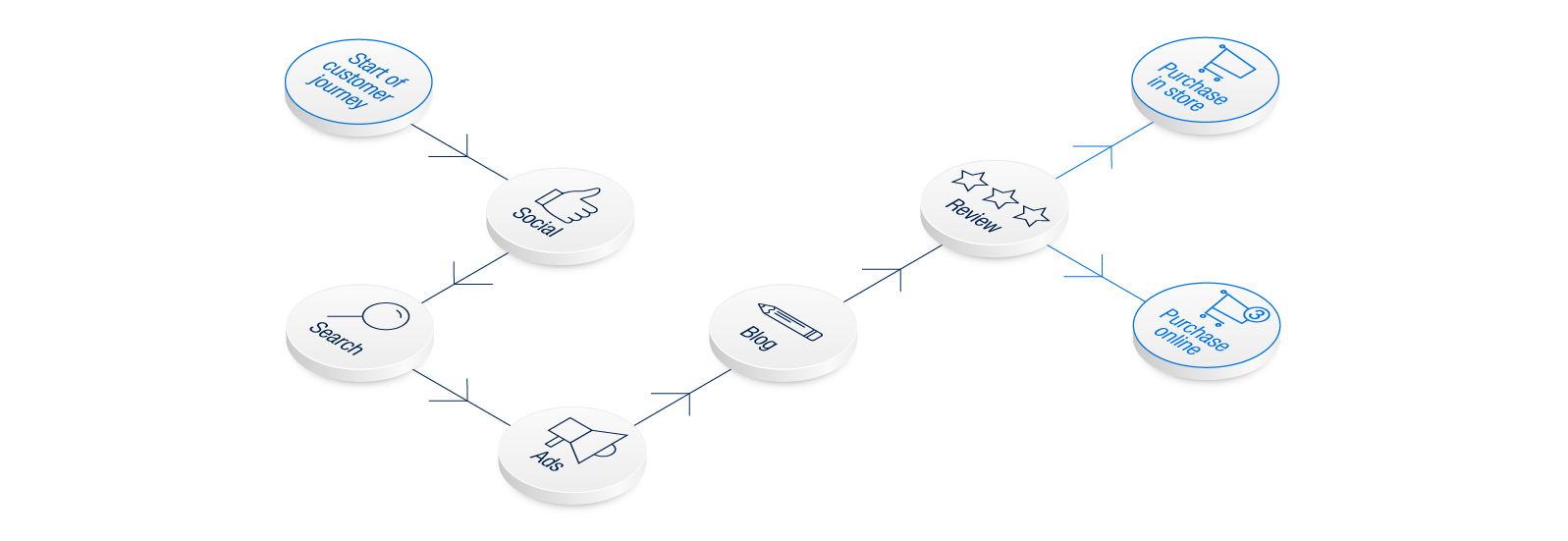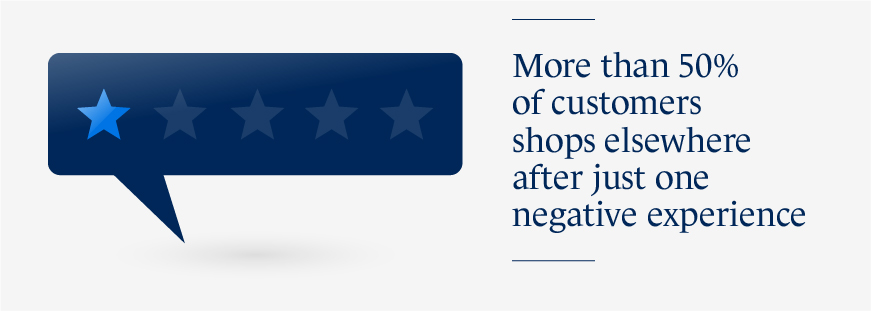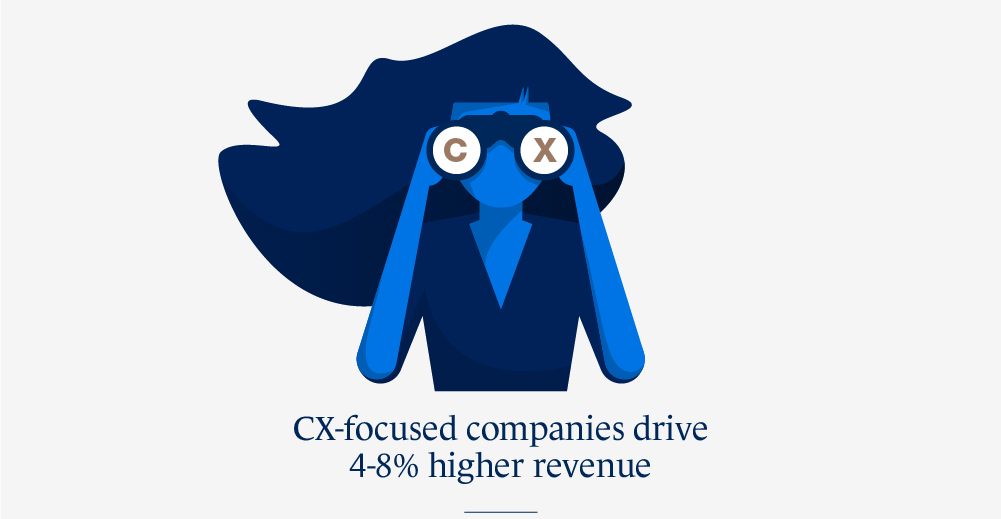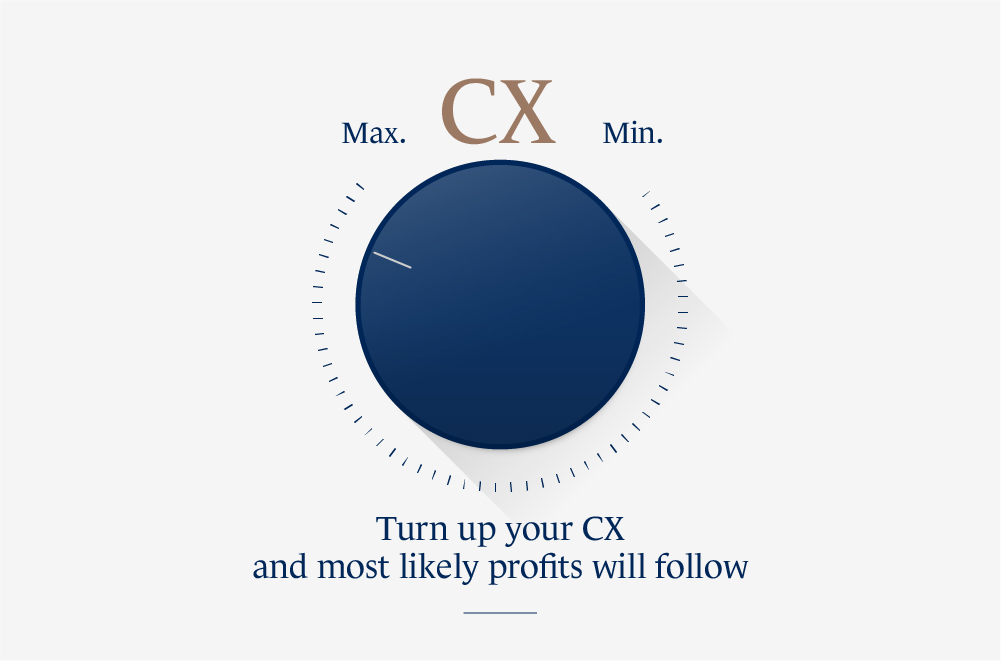Everyone talks about improving the customer experience - are you?
Today’s marketplace, both online and offline, and in all industries, has grown exceptionally competitive. Consumer expectations have also undergone a rapid reshaping — no longer does having the best product at the best price guarantee sales and customer loyalty. Rather, it’s providing a positive and memorable customer experience that ensures the success of a brand.
Organizations and businesses have had to alter their marketing strategies to better fulfill the current climate of consumer needs and wants, focusing firsthand on CX and how best to deliver it.
So what exactly is the customer experience? Is it all just marketing hype?
The simple answer to the second question is a strong “no.” The answer to the first question is not so simple. Sure, you can easily ascertain that a customer experience is comprised of the emotions, encounters, and occurrences that a customer will experience when dealing with a particular brand.
But that explanation doesn’t fully enable you to grasp the importance of the customer experience, and how a single negative or positive experience can dramatically impact your capability to achieve your goals.

What is customer experience?
Customer experience is the impression your customers have of your brand as a whole throughout all aspects of the buyer's journey. It results in their view of your brand and impacts factors related to your bottom line including revenue.
Source: HubSpot
Two important and eye-opening points about CX
Consider these two important and eye-opening points about the customer experience:
- Nearly 65% of consumers consider the customer experience to be more important than the price of a product or service.
-
Just over 50% of customers will stop doing business with a company after just one negative experience.
Now, the importance of providing a good customer experience becomes clearer. And as a business owner or manager, or the marketer responsible for the success of a brand, it is up to you to ensure that a customer or client has a good customer experience from the very first point of the customer journey to the very last, or you risk losing their business forever.
But maintaining your customer base isn’t the only positive that comes from providing good CX. Consider these additional benefits garnered by a brand that focuses on a CX-driven marketing strategy.

Benefits of providing good CX

CX trends and statistics you should know
Like many other marketing strategies, customer experience trends have also shifted from one year to the next as consumer needs and wants have also changed and evolved. Keeping up with the latest CX trends is a critical component to ensuring continued success and garnering a larger share of the target market.
Some of the most popular and growing customer experience trends marketers are seeing and utilizing this year include:
The omnichannel customer experience
Advanced AI in customer service
The mobile-first approach
VR and AR
Interactive sales tools
Additional important and growing trends you should be aware of include:
- Personalized Experiences
- Data Security
- Communication Skills
- Instant Gratification
- A CX-Centric Approach
- Measuring Customer Experience
- Proactive Service Strategies

Additional important and growing trends you should be aware of include:
- Companies that are CX-focused drive revenue 4-8% higher.
-
73% of companies that deliver an above-average customer experience report better profits than their competitors.
-
96% of customers say customer service is important when choosing which brand to remain loyal to.
-
Loyal customers are four times more likely to purchase again and four times more likely to refer a friend to the company.
-
68% of customers say the service representative is key to a positive service experience.
-
Companies that utilize customer journey maps as part of their marketing strategy reduce their cost of service by 15-20%.

Examples of innovative customer experiences
Example 1:
Place your products in a virtual space
If your company sells outdoor furniture, your best course of action would be to focus on the experiences surrounding the furniture. Rather than putting all your marketing efforts into pricing, features and benefits, you can use 3D visualization to provide customers with a more immersive experience that enables customers to visualize the furniture in completely different surroundings and locations. This is the best way to provide your customers with an idea of what life with your furniture will be like.
Here are a few examples of how BoConcept is placing their exclusive furniture in an exclusive environment that might not be available to them were it not for 3D visualization solutions.




Example 2: Use AR
Your business sells flooring and carpeting. Why be like so many other companies in the industry and hand out small samples that don’t really give the customer an idea of how the carpeting will look in their living room. Instead, you can use augmented reality (AR) to show your customers what the floor will look like in their own homes. And because they can view these images directly from their smartphone or tablet, you will have provided them with a personalized, online shopping experience that brings your product into a relevant context.
Example 3: Using VR in your CX
Your company designs and sells kitchens. You've already provided your customers with an engaging online experience through several points along the buyer journey, but now the buyer is deciding to visit your showroom. You know face the very important job of ensuring the consumer experience remains positive. You can do this by activating their senses and inviting them to interact with their soon-to-be new kitchen. Virtual reality (VR) is what makes this happen. Simply provide your customer with a pair of VR glasses and with a little bit of 3D magic, your customers can walk around in their new kitchen before it even exists. They can even listen to the sounds of opening and closing cabinets and feel the texture of the countertop.
The above examples are just a few ideas of how you can really expand upon the customer experience and create an engaging, intriguing, and truly memorable interaction.
Tips for delivering a positive customer experience
In order to deliver memorable and positive CX, it is important to remember that every step of the customer journey is a point that your brand can and will be judged on the experience provided. So the customer journey must be specially tailored to your audience. Follow these tips and tactics and you’ll be in a much stronger competitive position to successfully grow your share of the target market.
1 Know your audience
Collecting data on your customers and subsequently analyzing that data to determine their needs and wants is an important step to better knowing how to market to your target audience. With enough information, you can develop buyer personas, enabling you to fine-tune your marketing efforts.
2 Understand the buyer's journey
The buyer's journey, from start to finish, is your chance to impress the customer, make them aware that they have a need, and showcase how your products or services will fulfill that need. By knowing your audience you can better craft a buyer journey that delivers a more personalized experience, touches on buyer pain points, improves awareness of your brand, and provides valuable information.
This is a process that requires lots of planning and a good amount of content. The more informative, engaging, and interesting your content is, the more you will provide good CX and improve your chances of converting new leads.
3 Build customer relationships
Whether you do so online on social media platforms or via sales representatives on the showroom floor, interaction with the consumer is key.
4 Use technology at your disposal
High-quality images, professional video, intuitive sales tools, 3D animations, and even VR and augmented reality experiences can improve brand recognition and differentiate your brand from your competitors.
5 Analyze and adjust
Just like any marketing strategy, the CX must also be tested, analyzed, and adjusted according to new data and changing consumer behavior. You can gain valuable insight into how well your CX strategy is working by performing a customer experience audit from multiple internal perspectives. A thorough audit is best left performed by experienced professionals who will be able to efficiently measure the value and effect of the customer experience at every point along the buyer journey.
Developing your customer experience strategy
Your CX strategy will take time to develop — it must ensure that every interaction a customer has with a brand is focused on providing great CX. To aid you in designing and implementing your strategy, follow these guidelines.
Understand your customer
As mentioned earlier, knowing your customer and understating their pain points, wants, and needs is the first and most important step.
Stay focused
Keep your ultimate goal in mind, and figure out what it is that the customer wants to see and how they will respond in a manner that will help you achieve that goal. Don’t get lost in trying to throw too many things into the mix.
Listen to Your Customer
Customers will leave plenty of feedback for you to review and learn from. Both positive and negative reviews can offer great insight into what is working for you and what isn’t, and what needs to be improved.
Make things easier
Make it as easy as possible for the customer to find information, make a purchase, or speak to a customer service representative. More than 50% of consumers state that a single bad experience will cause them to do business with another brand.
Improve customer support
One bad experience with customer support could cause you to potentially lose more than a single customer when that individual shares their experience with others. But a customer that is satisfied with their customer support experience is also more likely to tell others how they were treated and valued, subsequently increasing brand loyalty.
Use technology
From interactive sales tools to AR and VR, high-quality video, 3D images and experience, and advanced product configurations that offer more features and benefits, there simply is no reason not to take advantage of digital transformation tools.
Give your customers the freedom to choose
Flexibility, such as a choice of payment options and pricing plans to omnichannel support to how a customer views your content is an important aspect of good CX.
Make it seamless
Keep your brand story consistent throughout the buyer journey and allow the buyer to move seamlessly from one point to the next.
Make it personal
An experience that feels personal strengthens that bond of trust between your brand and the consumer. Anything from recommendations based on previous purchase histories or personalized messages via email marketing help to foster a personal relationship with the customer who appreciates that personal touch and feels more valued.
Make CX part of the company culture
All departments in an organization must be included in the CX mission and they’ll be equally committed to helping you fulfill your goals.
Measure your results
Perform an occasional audit of your CX design.
Get the answers to all of your questions
With our solutions, you can leverage our technologies such as 3D visualization, augmented reality (AR), or virtual reality (VR) to improve online customer experiences. Let your customer better engage and interact virtually with your various alternatives to create memorable interactive experiences. We help you all the way towards improving your CX through our solutions and services with planning, production, execution, and every little detail in between.
Are you ready to make your digital dreams come true?
Over time, consumer wants and needs will change, competitors will advance their own CX strategy, and new trends will emerge. You must always strive to improve your own CX strategy in order to keep up. Becoming complacent could cause your brand to fall behind others in the industry. Overall, simply make the decision to never stop seeking to provide the best possible service for the customer at every step along the buyer journey, and seek to always meet and exceed their expectations.















